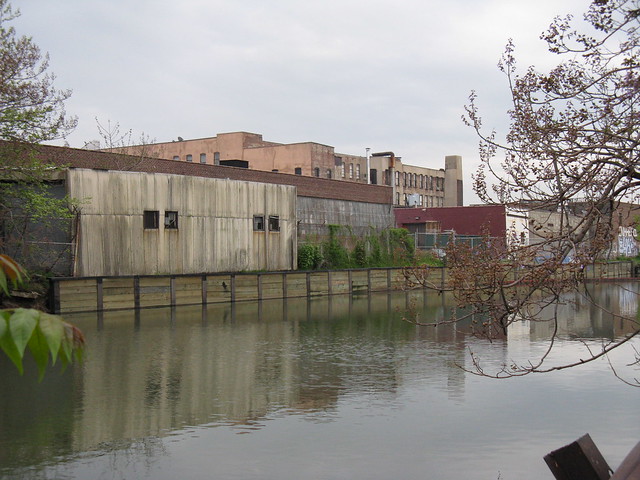 After the Gowanus Canal, an Environmental Protection Agency Superfund Site, flooded the surrounding area during Hurricane Sandy exactly two weeks ago today, many residents and business owners expressed concern. Did the sludge left behind when the waters receded contain any of highly toxic compounds from the canal? Did they have to be concerned about the Combined Sewer Overflow (CSO) that is dumped into the Gowanus during storm events?
After the Gowanus Canal, an Environmental Protection Agency Superfund Site, flooded the surrounding area during Hurricane Sandy exactly two weeks ago today, many residents and business owners expressed concern. Did the sludge left behind when the waters receded contain any of highly toxic compounds from the canal? Did they have to be concerned about the Combined Sewer Overflow (CSO) that is dumped into the Gowanus during storm events?The EPA came out to the community and took samples from two businesses on Douglass Street, located on the banks of the canal and near the flushing tunnel.
The results were just posted on EPA's web site:
Here is the statement:
US Environmental Protection Agency Hurricane Sandy Sampling Results
On October 31, 2012, EPA took 4 samples in the Gowanus Canal area. Samples were taken from the ground floors of two buildings that had been flooded as well as directly from the canal. One of the buildings is located at the head of the canal, and the other near the 3rd street turning basin.
Samples of flood water from the ground floors of the two buildings were analyzed for bacteria and 139 different chemicals within the following categories: metals, volatile organic compounds, petroleum related compounds and semi-volatile organic compounds. Semi-volatile organic compound include polycyclic aromatic hydrocarbons or PAHs, which are the primary contaminants in Gowanus Canal sediment.
Levels of bacteria were high. While this type of bacteria becomes inactive over time, these findings reinforce the need for people to protect themselves when cleaning up flood waters that contain sewage and therefore contain bacteria. Fact sheets detailing the precautions people should take when cleaning flood waters can be found at http://www.epa.gov/sandy
The remaining four categories of pollutants were compared to health based values of drinking water quality. Chemicals that were tested were below levels of concern or not detected. Low levels of gasoline and diesel derivatives were found, consistent with road run-off which often contains traces of fuel.
Levels of semi-volatile organic compounds were very low or not detected. These compounds include PAHs, which are a primary contaminant in the sediments at the bottom of the canal. The presence of some PAHs at low levels may also be related to spilled fuel and run off from asphalt.
Levels of most volatile organic compounds and metals were very low or not at levels that could be detected.
Levels of metals included some slight exceedances of drinking water standards. In the case of lead, its presence may be related to past lead usage in gasoline, typical to an urban environment.
Here are the complete results of the sampling.
No comments:
Post a Comment